Both, the OnePlus 12 and the iQOO 12 launched in December 2023 and January 2024, within a gap of a month. And since the time of these launches, there has been a lot of buzz about their cameras, especially since both of these brands are owned by the same parent company. BBK Electronics owns both, OnePlus and Vivo, and Vivo internally owns iQOO.
And both these devices have a very similar camera set-up, in fact they also use similar sensors and processors as well, making this comparison very interesting. The OnePlus 12 starts at ₹69,999 and the iQOO 12 starts at ₹57,999 and let’s find out which is the better camera between the two.
Look, Body & Feel
The iQOO 12 has been designed in association with the BMW M edition and you can see the reminiscence of that across the design, I really like the weight of the phone, it is really light and you hardly feel as if you are holding anything. But the camera module perspective the iQOO is very simple, they’ve not spent much time in trying to jazz up the module. It pretty much slapping on the module in the black background. The OnePlus on the other hand have some unique things about the 12, like the glitter effect when the light falls on it, also the flowy texture.
I have spoken about that in detail in my review of the OnePlus 12 Review here so you can see that as well.
Now both of the phones come with a triple camera set up and they have been updated of the latest software of Funtouch and Oxygen OS.
Camera Set-up:
iQOO 12
- Wide: 50 MP, f/1.7, 23mm, 1/1.3″, 1.2µm, multi-directional PDAF, OIS
- Telephoto: 64 MP, f/2.6, 70mm, 1/2.0″, PDAF, OIS, 3x optical zoom
- Ultra-Wide: 50 MP, f/2.0, 15mm, 119˚, AF
- Rear Video: 8K@30fps, 4K@24/30/60fps, 1080p@30/60/120/240fps, gyro-EIS
- Front: 16 MP, f/2.5
- Front Video: 1080p@30fps
OnePlus 12
- Wide: 50 MP, f/1.6, 23mm, 1/1.43″, 1.12µm, multi-directional PDAF, OIS
- Telephoto: 64 MP, f/2.6, 70mm, 1/2.0″, 0.7µm, PDAF, OIS, 3x optical zoom
- Ultra-Wide: 48 MP, f/2.2, 14mm, 114˚, 1/2.0″, 0.8µm, PDAF
- Rear Video: 8K@24fps, 4K@30/60fps, 1080p@30/60/240/480fps
- Front: 32 MP, f/2.4, 21mm (wide), 1/2.74″, 0.8µm
- Front Video: 4K@30fps, 1080p@30fps, gyro-EIS
Daylight Main Camera
In the primary camera both of these have a 50-MP camera but they feature different sensors, the OP12 features the Sony LYT808 sensor while the iQOO 12 features the OmniVision OV50H sensor. But the output from OnePlus is at 14.3 MP and the iQOO is close behind at 13.9 MP. Now why is this important for you to understand. While all manufacturers claim that the phones have a 200-MP camera, 50-MP etc., the output actually it captures isn’t in its full resolution, unless you are activating it. So, these things can be deceptive and often users feel that this is the resolution that the phone shoots at.

To test the phones, I chose a setting where there are shadows, darker areas and also brighter areas so that it pushes the phones to do more and the images from the iQOO were slightly underexposed and over sharpened in most cases, while the OnePlus gives more saturated output. The colour vibrancy is also visibly more on the OnePlus than the iQOO. In terms of the HDR performance, in some cases the iQOO is much better with bringing out the shadows and highlights, while in the other the OnePlus is better. There is also a hint of slight reddish tinge in the images from the iQOO. In terms of sharpness and details both the phones deliver a good performance overall.
Daylight Ultra-Wide Camera
In the ultra-wide category the iQOO shoots with a 50-MP camera at a 15mm focal range and the OP shoots with a 48-MP camera with a 14mm focal range, and the output is bigger also in the iQOO with a 13.8 MP vs the 13.2 MP of the OP.
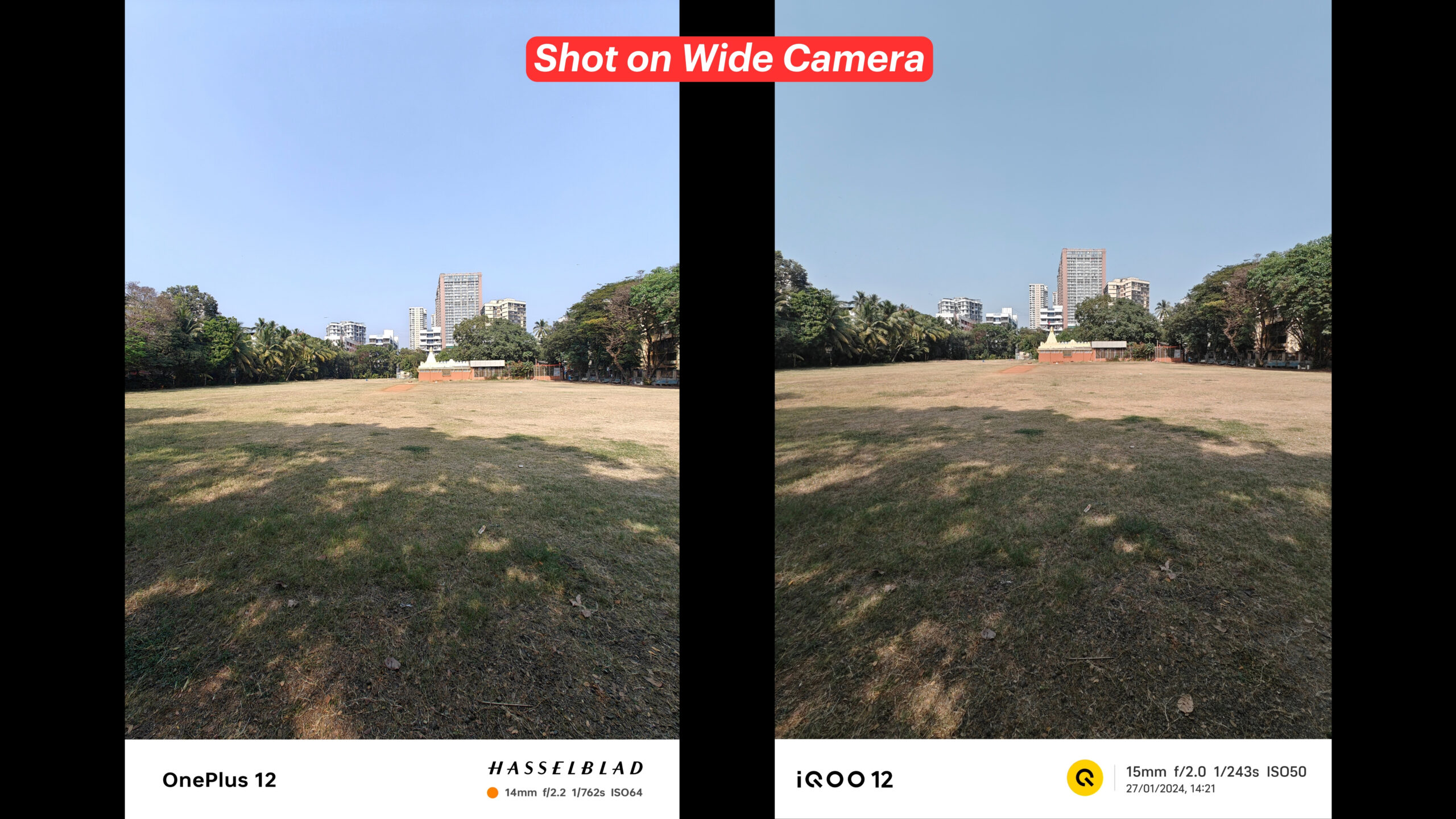
And in this case the performance was mixed from both the phones, in some cases the OP would be better and in the other iQOO would be better. Neither of them gives a consistent performance that you can really nail. Sometimes the images are underexposed on the OP and sometimes on the iQOO. Sometimes the HDR is better on the OP and other times better on the iQOO.
But like the primary camera, the iQOO again gives hints of reddish tone in them. While the OP 12 continues to give a slightly more vibrant image, which is slightly more saturated than the original scene. In terms of the sharpness and detail they both have a neck-to-neck performance with hardly to choose between them.
Daylight Telephoto Camera

In daylight both the phones feature the same sensor, which is the 64-MP OmniVision sensor, but the zoom capabilities that both of these offer are different. The OP 12 gives a range of 3x and 6x zoom which goes all the way up to 120x. On the other hand, the iQOO gives a zoom of 3x and 10X zoom up to 100x hybrid zoom.

In the images I like the fact that the iQOO gives you a more consistent tonal range across the focal range, which I found the OP 12 to not give. But yes, from the images perspective, both these phones give a good output. There is good sharpness and details in both, but slight over sharpening in the iQOO, especially at the higher focal range because of which the images also seem processed and sharper.
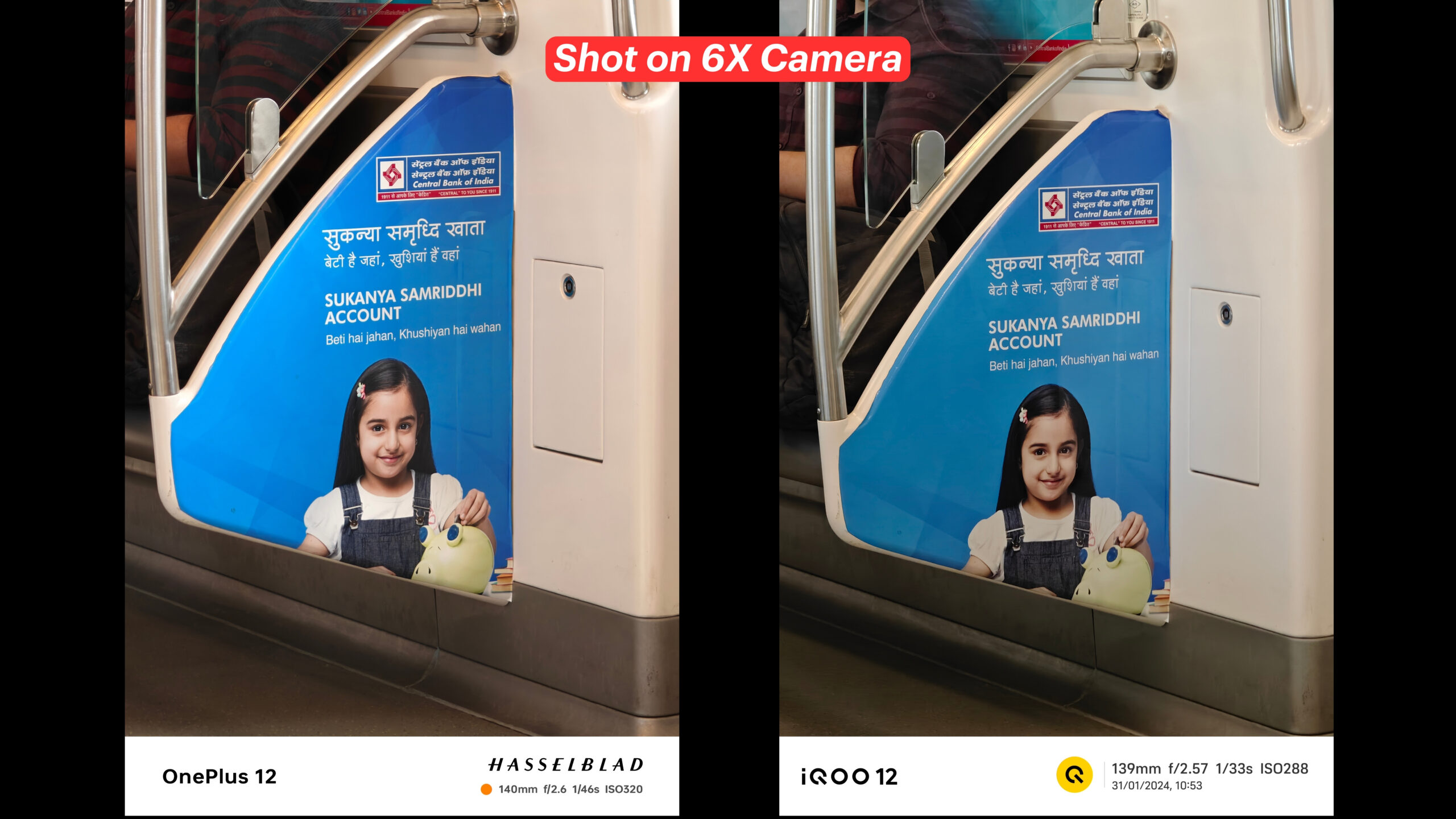
At the max focal range both the phones deliver ok result. You can’t really use these images, but one thing I’d like to mention is that with OP it’s a lot easier to shoot at the max focal range since it locks focus, which is very difficult to do with the iQOO.

Lowlight Main Camera
The performance in the lowlight category from both the phones is very different. When it comes to the primary camera, the results from the iQOO are slightly underexposed and over sharpened. The OP also over sharpens images in some cases, but is able to deliver a more natural and accurate output of the two. But I found the HDR performance of the iQOO to be much better in this case.

Lowlight Wide Camera
In the wide category the images similar to the daylight, both phones had a mixed output. Giving underexposed images sometimes and giving proper natural output the other times. But the images overall seemed more natural from the OP than the iQOO.

Lowlight Telephoto Camera
And much like the daylight performance the lowlight telephoto performance is also varied. You can see the difference in the images and the tonal range between the different focal range. The images are more contrasty and poppy in the OP and the iQOO processes those images more. Now both of these have the same sensors, but the OP delivers a closer to the real look. It’s as if they’ve been able to tweak the processing and signalling much better than iQOO. But the images are sharp and detailed in both phones, however at the max focal ranges you can see the stark difference in the output between both of them.


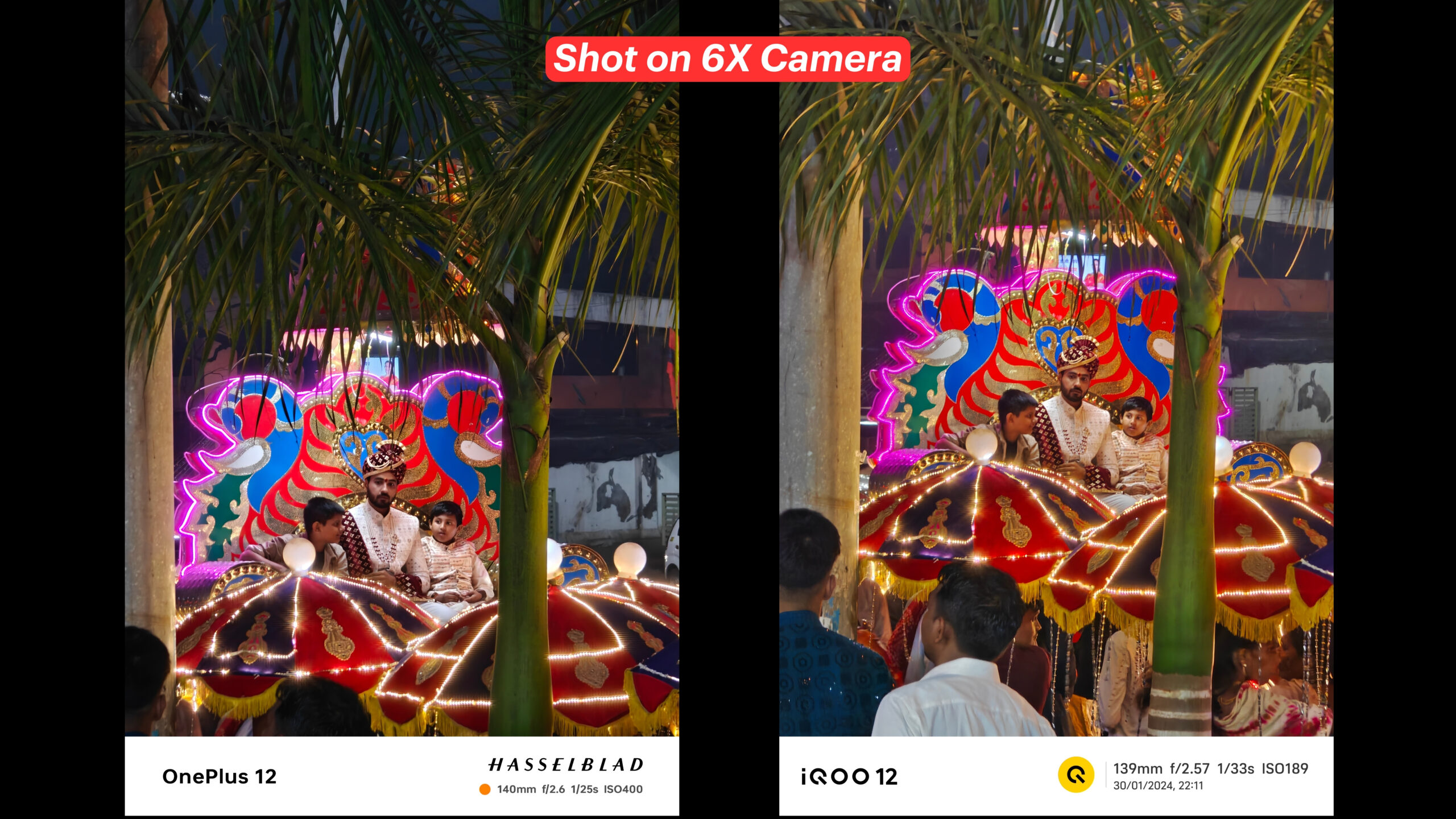

Macro
While OP has a higher hand in lowlight telephoto, in macro the iQOO with its super macro mode is really good. It allows you to blur the background which the OP won’t do. The images from the OP 12 also come out nice, but with the super macro mode the images from the iQOO are much better.
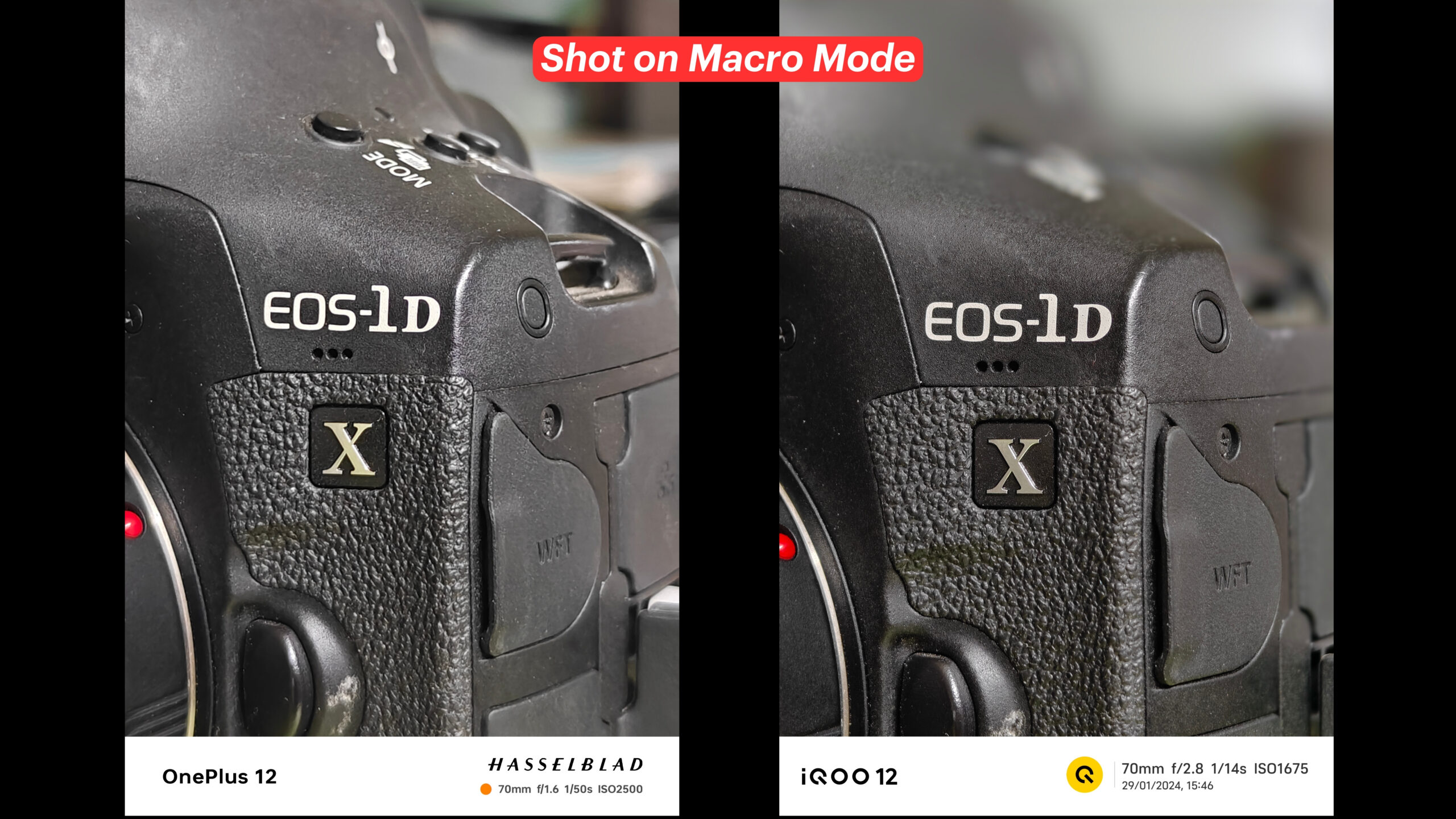
Portrait
In portraits both the phones allow you to shoot at 1,2 and 3x but the performance varies in both of them. They do deliver sharp and detailed images, but the OP gives a much warmer tone in the images, which might be liked more by the users. The iQOO adds a slight yellow tinge to the subject while the OP adds a slight reddish tinge. Neither of the phones deliver the actual scene in daylight. But in terms of the edge detection in daylight the iQOO is much better, sharper and well defined edges as compared to the OP.
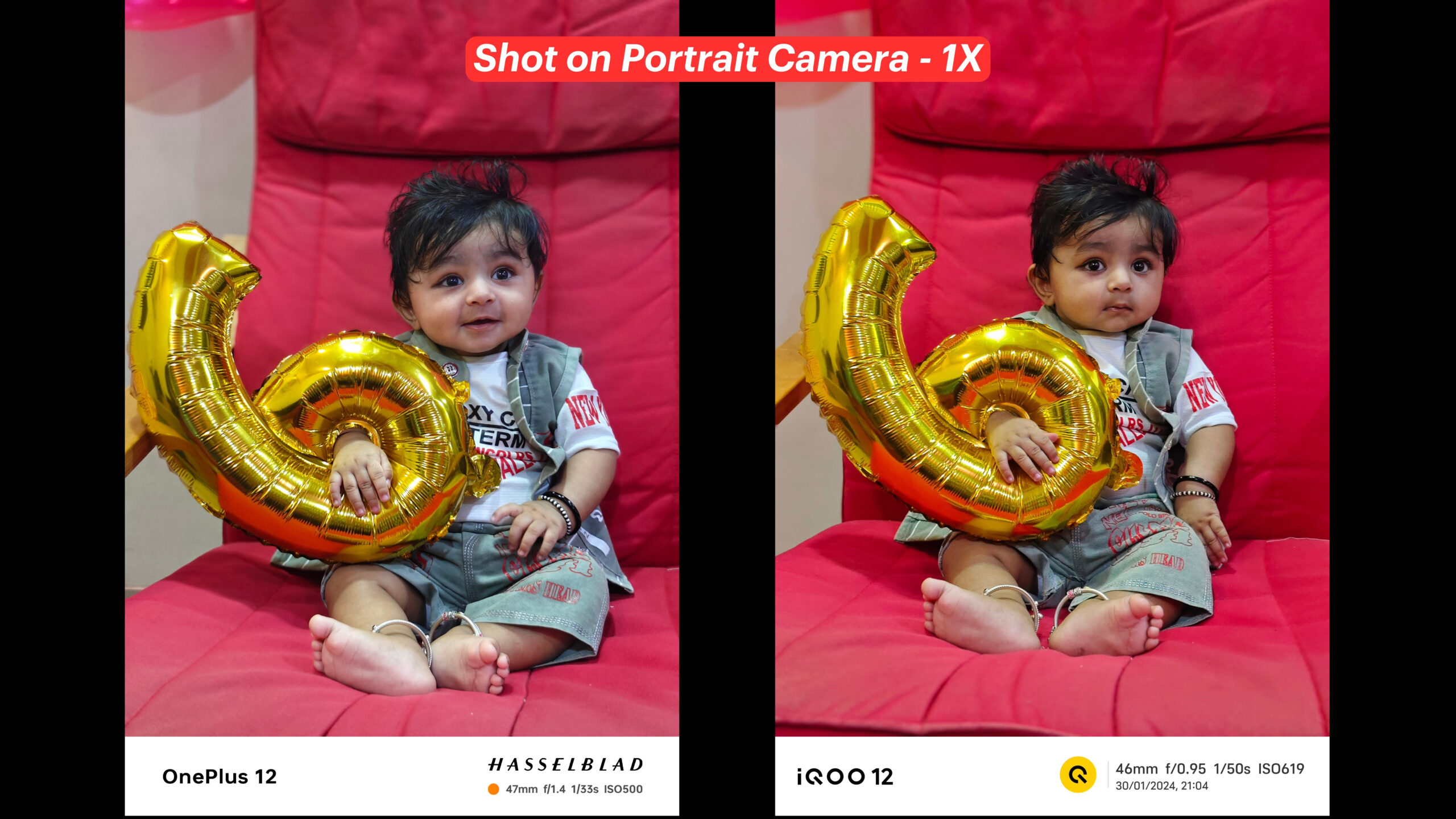

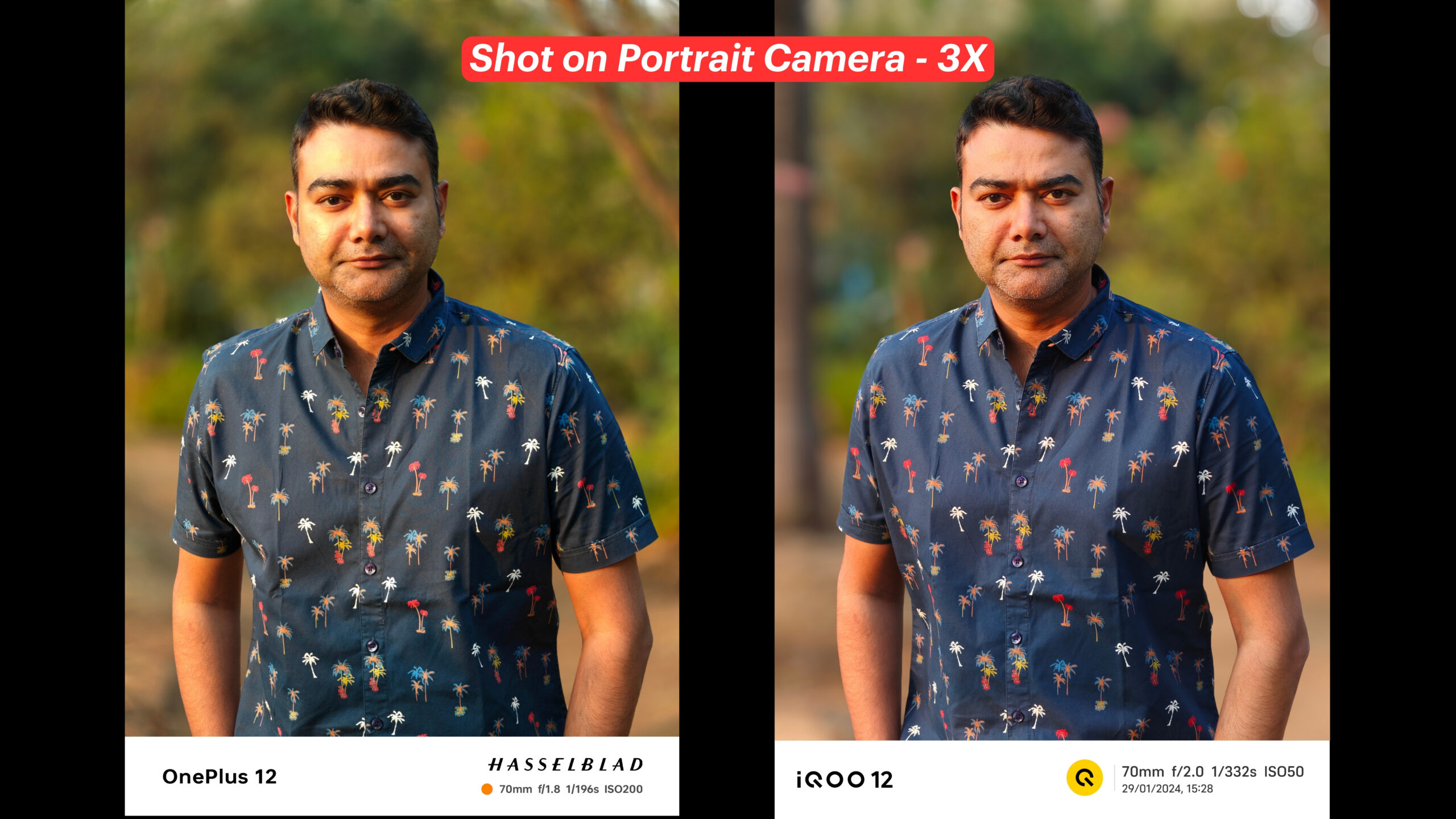
But as good as the iQOO is in the daylight with edge detection, it’s is pretty average overall in lowlight portraits. The images are oversaturated, much too warm and also sometimes at the high focal range shows colour fringing again. The OP in this case delivers an OK performance, the images come slightly underexposed, but much better that the iQOO for sure. So overall in this case I would say the OP is more consistent overall in portraits.
Front camera
And OP is able to continue that in the front camera as well. It has a new 32-MP camera versus the iQOO 16-MP camera which at best delivers an ok performance. The images from the OP are sharper, much better and also is able to deliver more. Even in portrait the camera is able to sense the depth much better. For instance, I took this pic at F1.4 from both the phones and the iQOO gave less depth as compared to the OP. Yes, it does go as wide as 0.95 but even then I thought the depth was ok. In edge detection also the camera is much better.
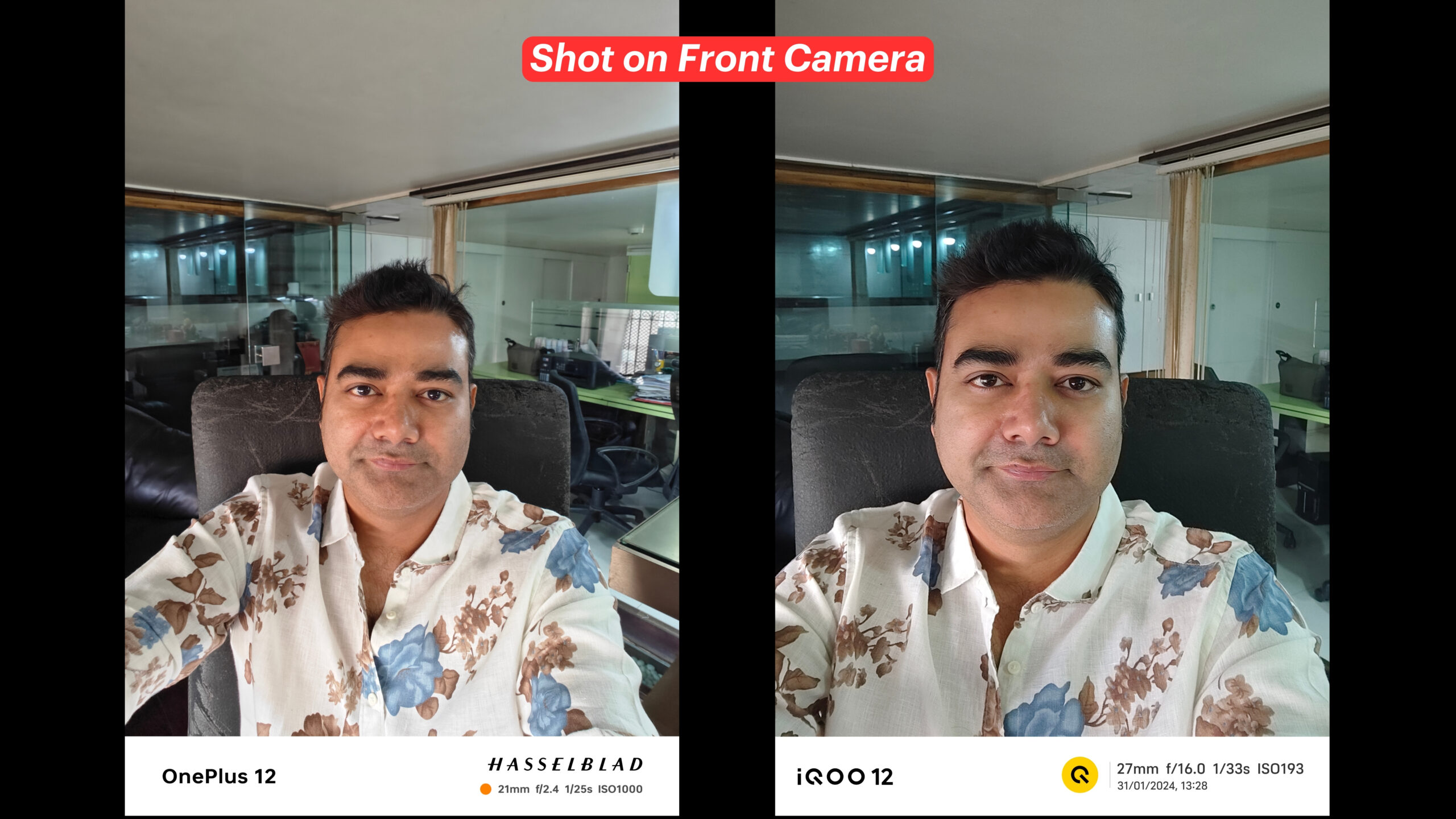
Video Performance
In video both can shoot up to 8k but the iQOO goes up to 30 fps whereas the OP can go up to 24 fps. The OP also gives you 5 lenses to shoot from as compared to the iQOO.
In terms of output both the phones have a good output, but the samples from OP looks more vibrant and natural, the stabilisation is good in both but it is better in the OP again and overall in the video as well I felt that OP was better.
Other things
Every time that I was shooting with the IQOO the screen would show the live feed much darker than the actual output. That was surprising since there was no way for me to tell if what is the output the camera would show. Also the iQOO was heating up more than the OP as well.
The camera UI is something that I have included in this comparison coz I felt that the fluency of the camera app was better in the OnePlus and also the screen at 4500 nits is just phenomenal.
Conclusion
So which is the better camera between the two? Yes, both of these manufacturers need to work on certain aspects of their cameras even now, but overall in terms of not only the camera, but also the specs, the optimisation of how the phone works overall, OnePlus is the much better camera and phone in most aspects.
Text and Images by Bhavya Desai
